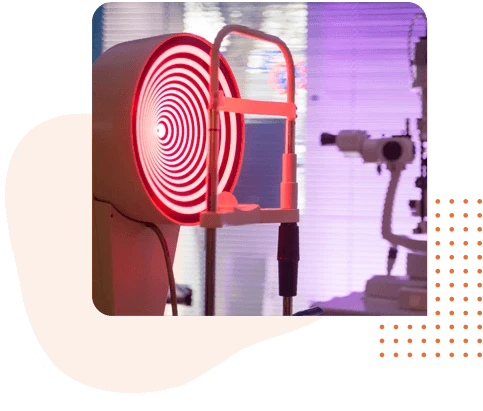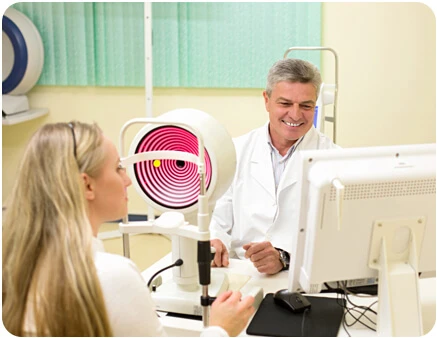Corneal Topography Scanning
Eyes on Brickell is a premier Miami eye clinic that caters to all of your vision and eye care needs. We strive to provide comprehensive eye care to our patients with a team of experienced optometrists. We use cutting-edge eye care technology to provide first-rate eye and vision care solutions under the direction of Dr. Antoine Copty, an internationally qualified optometric physician. Our optometrists use corneal topography scanning to obtain crucial information about the shape and contours of the cornea, enabling us to diagnose and treat various eye conditions.
With the goal to help you achieve better vision and overall eye health, we use topography scanning to map the surface curvature of the cornea, the clear front part of the eye. This allows us to diagnose, treat and monitor a wide variety of eye conditions, including astigmatism, keratoconus, and corneal irregularities more accurately.

We also use this process to create customized treatment plans for our patients such as customized refractive surgery or contact lens fitting. From a patient’s perspective, corneal topography scan process helps them better understand their eye conditions and treatment options.

What Is Corneal Topography Scanning?
Corneal topography scanning is a non-invasive imaging technique that digitally maps the shape of the cornea to diagnose irregularities, conditions such as keratoconus and astigmatism. Optometrists use specialized technologies such as structured light or lasers to collect the data points, enabling an accurate 3D representation. Our cornea transplant surgeon in Miami creates a 3D map of the cornea’s surface curvature.
Therefore, it improves diagnosis accuracy, treatment optimization and post-operative monitoring. In essence, we believe that the whole process of topography eye scan in Brickell can ultimately improve the patient’s eye health and visual outcomes.
What Are The Benefits Of Corneal Topography Scanning?
- Accurate Vision Assessment:
The corneal topography test can help to get thorough insights into the shape of your eyes. This allows your eye doctor in precise assessment and diagnostics of your vision. - Customize Contact Lenses:
The scanning process helps customize contact lenses that precisely adjust to your corneal curvature, providing optimal comfort and visual acuity. - Early Detection:
The procedure lets your optometrist to discover eye disorders such as irregular astigmatism or keratoconus in the early stages, enabling timely intervention. Many experts use the corneal topography for Keratoconus in Miami. - Effective Surgical Planning:
Topography scanning is necessary to ensure the success of operations such as LASIK, PRK, and corneal transplants. - Successful Post-op Monitoring:
An eye doctor might use the test to assess recovery status following eye procedures to ensure optimal healing. - Determine Contact Lens Fit:
It can aid in determining the optimal contact fitting for patients, thereby improving their vision comfort.
What Happens During Corneal Topography Scanning?
The corneal topography test near me can help reveal important details about the shape and contours of the cornea. Before undergoing the procedure, it is understandable that you would have some doubts regarding the same. One of those doubts is what happens during topography scanning, isn’t it?
Thus, let’s get familiar with the things that happen during corneal topography scanning:
- You’ll be seated in front of an illuminated bowl with circles inside. Your chin and forehead will be supported to keep your head motionless for clear photos.
- Then you’ll have to concentrate on a target in the bowl while fast scans are performed. It could be done several times.
- In astigmatism corneal topography Near Me, nothing touches your eye during the procedure, so it is painless.
- During the exam or at a follow-up visit, your doctor may go through the images obtained through topography scanning with you.
Is There Any Risk Associated With Corneal Topography Scanning?
Corneal Topography Scanning in Miami is generally considered safe and non-invasive. There are minimal risks associated with the procedure. The technology used in these scans does not touch or directly interact with the eye’s surface, which significantly reduces the chances of complications.
But if you have concerns about the procedure, it’s best to discuss them with your eye care professional before undergoing corneal topography scanning.


